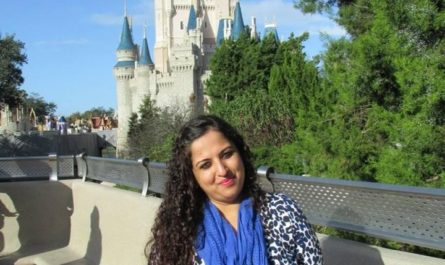Meet a mum who has been quite passionate about spreading awareness on child sexual abuse. Anuja Amin, a mum to two kids, a child sexual abuse educator, a survivor and a fighter herself has designed this program where she lists out 10 body safety rules.
She also shared a video where she spoke on three tips to keep children safe.
https://www.facebook.com/mumsandstories/videos/754878718635650
Anuja , based in Ahmedabad is a Post-Graduate in Human Resource Management from the London School of Economics. Her mission of reaching out to children, especially with a traumatic childhood, led her to pursue a Bachelors of Science in Psychology from the University of Nottingham. Building Circles of Safety is a module she has created to educate and empower children, teachers, parents and the community to prevent child sexual abuse.
Motivated by her own experience, she recently developed a rights-based curriculum to provide age appropriate and accurate sexuality education that empowers young people to take responsibility for their own decisions and behaviours, and the ways in which they may affect others. The curriculum informs students from grades 1 to 12, on a range of topics such as puberty, gender stereotypes, bullying, consent and more so that they grow into respectful, confide more easily.
Given the current scenario, children are house bound and the government and media in their messages insist to ‘Stay home, Stay Safe’. But this is not the case for many children out there who are victims of child sexual abuse. She wants parents to:
1) Raise their awareness by learning the facts of child sexual abuse
2) Spot early warning signs
3) Stop any boundary violations
4) openly communicate with children on body safety, puberty, growing up, consent and all aspects of our sexuality.
5) React responsibly and sensitively in case a child discloses abuse

Anuja Amin shares with Mums and Stories, “ I am a mother, an educator and a survivor. I have dedicated my life to talking about a topic that most people don‟t want to think about- preventing child sexual abuse. I experienced several forms of sexual abuse from the age of 5- 9 years and then sporadic episodes continued into my teens. The denial, stigma and silence allow for this silent epidemic to breed. In India, 1 in 2 children (boys and girls) are sexually abused by the time they turn 18 years. Educating ourselves and empowering our children with age appropriate and accurate knowledge is the first step to keep children safe.
Circles of safety is an initiative I started to cultivate a change in culture in which parents are no longer uncomfortable or afraid when discussing sex and related issues. I want parents to feel good about educating themselves–motivated by love for their children–not fear.
Parents assume that broaching topics related to sexuality will corrupt the mind of their innocent „baccha‟. So they avoid the conversation under any circumstances. However, research shows that children that are armed with age-appropriate and accurate information are more likely to make safe choices and set personal safety boundaries.
I can‟t even remember when I finally had a name for what had happened to me. I always felt uncomfortable but I was not sure if it was wrong! I did not have the vocabulary to describe what was happening to me. It was confusing, to say the least!
Here are 10 messages I share with my child on an on-going basis as part of daily conversation:
1. Proper names for body parts: At 18 months, I used real names of body parts, not fun made up names. So its penis, vagina, vulva, buttocks/ bum, breasts and nipples. These are the private parts. Private means- just for you. Use teachable moments- diaper changes, bath time are the easy ones. Parts of the body that are covered by a bathing suit are private- out of sight/touch of other people. Use examples, toilet is a private space but kitchen is a public or shared space. So relate it to space and body parts. The sooner you do it, the more practiced you will be at making these acceptable, comfortable, non-taboo words.
2. Hugs, kisses and being touched is always optional: You are creating a culture of consent and teaching your child body autonomy. When children tell us they don’t want to hug and kiss everyone at a family gathering, support them by helping them find another way to show respect to family members. I would give her the option of seeking blessings by touching their feet (if acceptable), shaking hands, high fives or waving. They should know that physical touch is optional. Sometimes, other family members would ignore my child’s limits. So I had to insist on my child’s rights to set boundaries. They should never feel obligated to respond physically.
3. Safe and Unsafe touch: Sexual touch can be very confusing. Bad touch does not always feel bad in a strictly physical sense. This can create more shame and confusion about the situation. From the beginning, I refrained from using terms such as „good‟ and „bad‟ touch. Instead, I used concrete examples to describe various types of touch. For instance, “when you are sad and mom hugs you that is a safe touch, grabbing a hot pan or somebody kicking/ pushing you is an unsafe touch and confusing touch could be a teacher stroking your thigh for no reason.”
4. Discourage secrets: I have helped my children distinguish between happy surprises and unsafe secrets. “Baking dad a birthday cake is a safe surprise. But keeping a secret about a special game you play with your friend is an unsafe secret which is not Okay! You must talk to a safe adult.”
5. Respond to the ‘icky’ feeling: Just like us, children can sense if a person or a situation makes them feel uneasy. “Icky feeling is like a guiding voice that you must trust.” Help children verbalize their feelings. Inform them about some of the warning signs of discomfort- sweaty palms, uneasy stomach, heart racing. “It is very important that you tell me if a person or situation makes you feel this way so that I or another safe adult can help you.”

6. The rules are the same for a familiar person or another child: Warning your child about stranger danger is not enough. 9 out of 10 children are abused by someone they know and trust. It’s someone they love, someone that has made them feel special, especially if they are lacking close relationships with others, specifically parents or other family members. “Sometimes nice people, do wrong things. If someone you know or care for breaks any of these rules, be sure to tell me or another adult you trust so that we can help that person learn the rules.”
7. Help your child identify safe adults: Help them build a safety network consisting of three to five adults. Ensure that at least one adult is not a family member. Ask “If you don’t feel comfortable talking to me about something, who else can you talk to?” or “What if something happens at school or the playground, who could you talk to?”
8. Nothing on the internet is private: In this „new normal‟ most kids are now using devices for the purpose of learning. It is through these very devices, that sexual predators can make advances. Try to understand the applications your kids use and the websites they visit. “Sometimes adults try to trick children into getting personal or inappropriate information. As adults we are better able to recognise the harmful things and hence need to monitor activity. If you don‟t know someone in real life, don‟t let them follow you as they will have access to your photos, friends and posts.”
9. I believe you. It’s always right to tell: I disclosed after 20 years. Not all children will understand the extent of the abuse right away. By the time they do – it may seem too late to tell. Reassure them that they can tell you anything. No matter what they tell you, even if it shocks you and makes you feel sick, that you will believe what they have to say. They won‟t get into trouble for telling. One of the ways abusers get away with abuse for so long is because they manage to convince children that nobody will believe them if they tell.
10. Teach your child to respect other people’s personal space/ boundaries: Don‟t miss a real prevention opportunity! In more than 30% of child sexual abuse cases, a child is sexually harmed by another child or adolescent who may not fully understand the impact of their actions. Our child should not be forcing someone else to take a kiss, a hug, or be touched/ tickled. “If someone says no, pushes or runs away, or seems uncomfortable – you need to stop and give that person space. We all deserve to have our personal space respected.”
I urge parents to start talking to their children today. Remember, if you can‟t have these conversations with your child unfortunately other people will be having those conversations for you.”
To share your thoughts, experiences, queries, please write to Anuja on: info@circlesofsafety.com
Mums and Stories in August 2020 had a Facebook Live Session with Anuja Amin to discuss Simple Strategies to Prevent Child Sexual Abuse. You can check the insightful conversation here




Informative information and helpful as well
Thank you Ramya! For more information on related topics please follow us on Instagram @circles_of_safety!